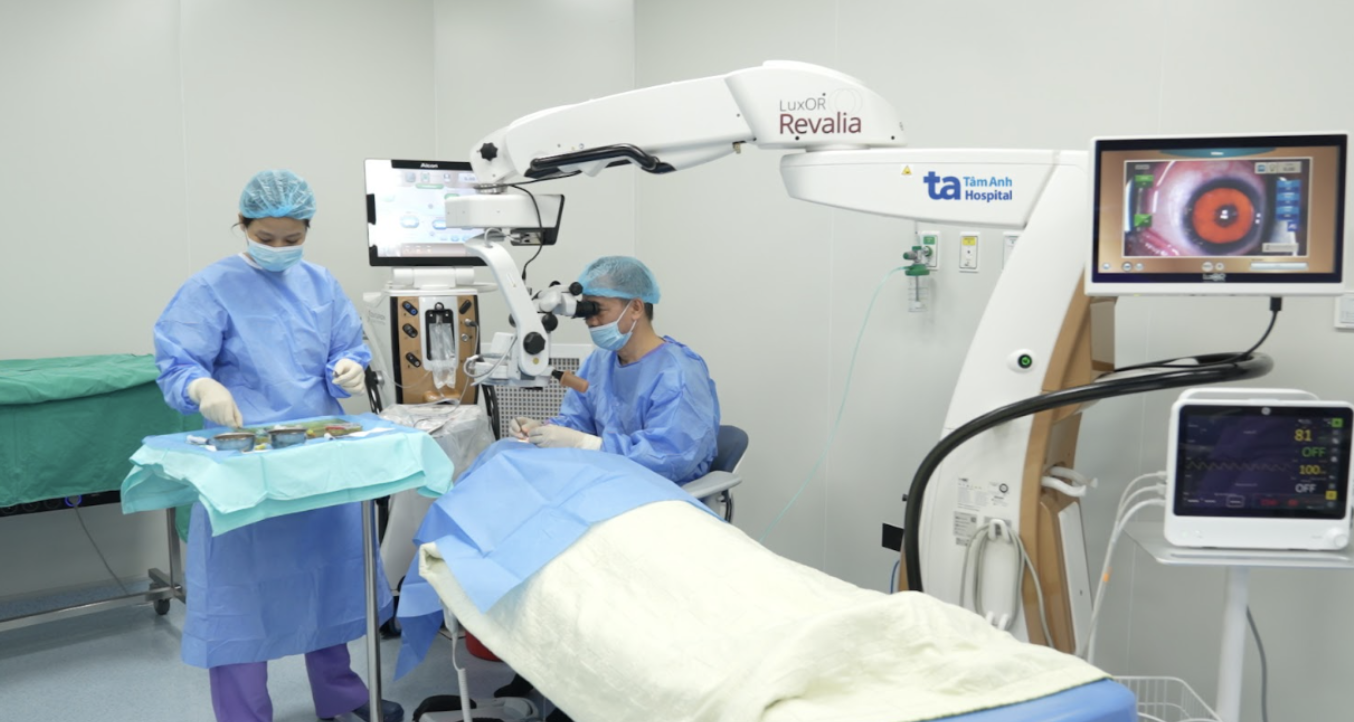Reduced vision, affecting distance vision, near vision, or color and light perception, is a common problem. Many people believe that wearing glasses or contact lenses can fix it. Dr. Le Thanh Huyen, from the High-Tech Eye Center at Tam Anh General Hospital, explains that wearing glasses is only a temporary solution and doesn't address the underlying cause. Reduced vision can be a warning sign of a serious condition requiring prompt attention and intervention.
Here are some common eye conditions that can cause varying degrees of vision loss.
Refractive errors
Refractive errors are vision disorders that occur when light doesn't focus properly on the retina, causing blurred vision. They affect people of all ages, but are especially common among students, office workers, and those who frequently use electronic screens.
Nearsightedness (myopia) is the most common type, making it difficult to see distant objects. Farsightedness (hyperopia) occurs when images focus behind the retina, affecting near vision, and if severe, can also impact distance vision. Astigmatism distorts vision due to uneven light focus, potentially affecting both near and far vision.
Presbyopia, common in people over 40, occurs with age as the eye's ability to focus on near objects declines. People with refractive errors can use glasses, contact lenses, or consider surgery to improve their vision.
Cataracts
Cataracts are characterized by cloudy vision due to abnormal protein changes in the eye's lens, caused by internal factors or environmental influences. This is quite common in older adults due to the natural aging process. Cataracts can also be present from birth due to genetic factors, metabolic disorders, or complications from other medical conditions.
They can also develop after eye injuries, surgeries, medication side effects, or systemic illnesses like diabetes. Symptoms include clouded vision, as if looking through a fog, yellowish or grayish images, and sensitivity to bright light. According to Dr. Huyen, cataract surgery with an artificial lens implant is a common and effective long-term treatment.
 |
Doctor performing cataract surgery. Illustration: Tam Anh General Hospital |
Glaucoma
The eye continuously produces and drains fluid at a balanced rate. However, when this drainage is obstructed, intraocular pressure increases, potentially damaging the optic nerve and leading to glaucoma. This disease progresses silently and is difficult to detect. Glaucoma causes irreversible vision loss and can lead to blindness. Dr. Huyen recommends annual eye exams, including intraocular pressure measurements, to detect glaucoma early.
Age-related macular degeneration
The macula is the central part of the retina, responsible for central vision. Macular degeneration gradually reduces vision over time. There are two main types: wet and dry. Dry macular degeneration causes slow vision loss over years, while wet macular degeneration tends to cause sudden vision loss within days or weeks.
Night blindness
Night blindness, reduced vision in low light, is often linked to dysfunction of the rod cells in the retina. Common causes include vitamin A deficiency, retinitis pigmentosa, cataracts, diabetic retinopathy, medication side effects, or optic nerve damage. Determining the specific cause requires an eye exam and further testing if necessary.
Khue Lam
| Readers can submit questions about eye diseases here for doctors to answer. |












